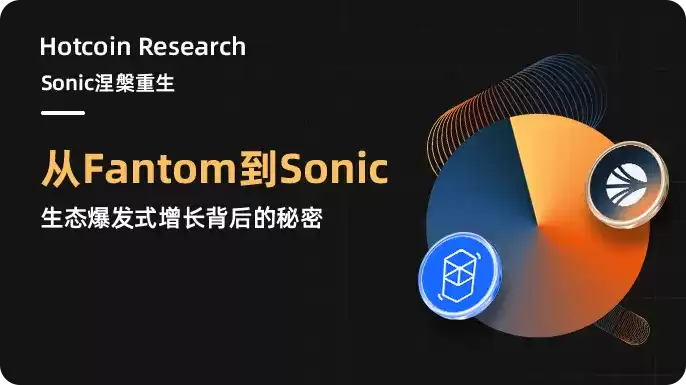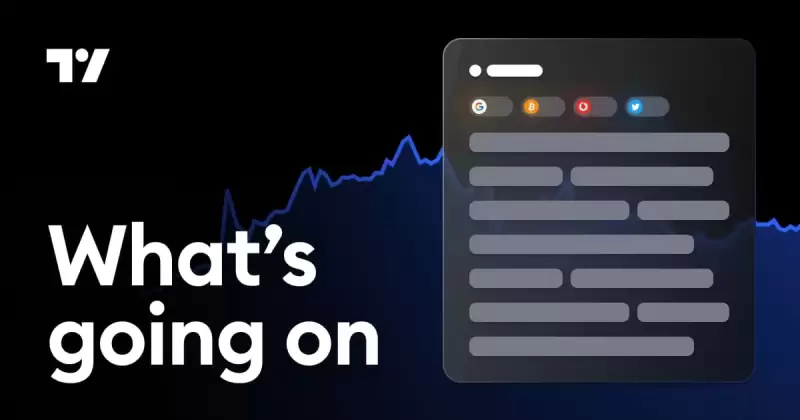 |
|
 |
|
 |
|
 |
|
 |
|
 |
|
 |
|
 |
|
 |
|
 |
|
 |
|
 |
|
 |
|
 |
|
 |
|
自Fantom升級到Sonic以來,鏈上TVL和令牌已經顯示出爆炸性的增長趨勢。

Introduction
介紹
Since Fantom upgraded to Sonic and announced a series of new plans, both the on-chain TVL and tokens have shown explosive growth trends. The introduction of the new FVM virtual machine, Carmen storage system, and Sonic Gateway has brought continuous development momentum to the ecosystem. Moreover, the return of Andre Cronje and his influence in the DeFi field help attract quality projects to join Sonic and promote a positive cycle of the Sonic ecosystem through his four visions (fee monetization, transaction fee subsidies, dynamic fees, and native economic account abstraction). The upgrade from Fantom to Sonic marks a rebirth for this veteran public chain, making Sonic one of the fastest-growing emerging chains. As long as the ecosystem's popularity and capital inflow are maintained, Sonic's TVL is expected to further increase, potentially challenging the locked asset scale of traditional mainstream public chains. This article will delve into the key data and driving factors behind the growth of the Sonic ecosystem, focusing on its technological upgrades, popular projects, and token market performance, and explore the new trends and investment opportunities in DeFi that Sonic may lead in the future.
自Fantom升級到Sonic並宣布了一系列新計劃以來,鏈上TVL和令牌都顯示出爆炸性的增長趨勢。新的FVM虛擬機,Carmen Storage System和Sonic Gateway的引入為生態系統帶來了連續的開發動力。此外,安德烈·克朗耶(Andre Cronje)的歸來及其在defi領域的影響力有助於吸引高質量的項目加入Sonic,並通過他的四種願景(費用貨幣化,交易費用補貼,動態費用和本地經濟賬戶抽象)來促進聲音生態系統的積極週期。從Fantom到Sonic的升級標誌著這位資深公共連鎖店的重生,使Sonic成為增長最快的新興連鎖店之一。只要維持生態系統的知名度和資本流入,Sonic的TVL就會進一步增加,這可能會挑戰傳統主流公共連鎖店的鎖定資產規模。本文將深入研究聲音生態系統增長的關鍵數據和驅動因素,重點關注其技術升級,受歡迎的項目和代幣市場績效,並探索Sonic在未來可能會導致的Defi的新趨勢和投資機會。
Changes from Fantom to Sonic Upgrade
從Fantom到聲音升級的變化
The renaming and upgrading of Fantom to Sonic is not just a change of name, but also represents significant improvements in the underlying architecture. The core of this upgrade includes the Fantom Virtual Machine (FVM), storage system optimization (codenamed Carmen), and the Sonic Gateway cross-chain gateway. These upgrades aim to comprehensively enhance network performance, scalability, and interoperability, providing a better experience for developers and users.
Fantom對Sonic的重命名和升級不僅是名稱的更改,而且代表了基礎架構的重大改進。此升級的核心包括Fantom Virtual Machine(FVM),存儲系統優化(代號Carmen)和Sonic Gateway跨鍊網關。這些升級旨在全面增強網絡性能,可擴展性和互操作性,為開發人員和用戶提供更好的體驗。
1. Technical Upgrade Content
1。技術升級內容
1) Fantom Virtual Machine (FVM): Sonic introduces its self-developed FVM to replace the original EVM execution environment. FVM is fully compatible with EVM, allowing existing Ethereum contracts to be seamlessly migrated to Sonic, reducing development and migration costs. More importantly, FVM has been deeply optimized for parallel processing and instruction sets, with its smart contract execution speed and throughput improved several times compared to EVM. Test results show that FVM improves transaction processing speed by 8.1 times and reduces on-chain data storage requirements by 98%. This means that on Sonic, transaction confirmations can be completed in sub-second levels, with users hardly feeling any delay; at the same time, network resource utilization is higher, consuming less computational and storage resources per transaction. For developers, FVM provides more comprehensive debugging tools and supports more programming languages beyond Solidity and Vyper, giving developers more flexibility. In summary, FVM greatly alleviates the performance bottlenecks of the previous EVM, providing a fertile ground for complex DApps on Sonic. 2) Carmen Storage System Optimization: As the blockchain runs over time, the explosive growth of state data can place a heavy burden on nodes. To address this, Sonic has adopted a brand new Carmen state database. This solution can trim and compress historical data on demand, significantly reducing the storage requirements for nodes. After the upgrade, the amount of data required to run a validating node has decreased from about 2000GB to 300GB; the storage requirements for a full archival node have dropped from over 11TB to less than 1TB. The drastic reduction in storage burden lowers the operational costs for nodes, enabling more ordinary participants to run nodes, thereby increasing the network's decentralization and security. At the same time, Carmen supports parallel processing of data requests, maintaining efficient responses even under high loads. For frequently accessed data (such as DeFi protocol states), the system employs intelligent strategies to ensure fast reading, while older and less frequently used data is compressed and archived. All of this ensures that the Sonic network can maintain performance and scalability at a low cost even in large-grade application scenarios. 3) Sonic Gateway Cross-Chain Gateway: To enhance interoperability with ecosystems like Ethereum, Sonic has launched the native cross-chain bridge Sonic Gateway. It is a decentralized bridging solution that connects the Ethereum mainnet and the Sonic network, enabling secure two-way cross-chain asset transfers. Through Sonic Gateway, users can quickly transfer ERC-20 assets from Ethereum to Sonic (arriving in about 10 minutes), while transferring back from Sonic to Ethereum takes about 1 hour. The bridge has a comprehensive security mechanism, such as built-in fault protection: if the gateway is unusable for 14 consecutive days, users can retrieve their original assets on the Ethereum side, eliminating the risk of assets being locked for long periods. Additionally, the gateway monitors the status of both ends through cross-chain "heartbeat" signals to ensure the safety of user funds. Compared to typical Ethereum Layer 2 solutions, Sonic's cross-chain transfers do not require a 7-day challenge period. It is worth mentioning that while Sonic is highly integrated with Ethereum, it is not a Layer 2 expansion but a hybrid L1+L2 network: from Ethereum's perspective, Sonic connects to the mainnet like an L2, but it remains an independent L1,
1)Fantom Virtual Machine(FVM):Sonic引入了其自發開發的FVM,以替換原始的EVM執行環境。 FVM與EVM完全兼容,可以將現有的以太坊合同無縫遷移到Sonic,降低發展和遷移成本。更重要的是,與EVM相比,FVM已針對並行處理和指令集進行了深入優化,其智能合同的執行速度和吞吐量幾倍。測試結果表明,FVM將交易處理速度提高了8.1倍,並將鏈上數據存儲要求降低98%。這意味著,在聲音上,交易確認可以以次秒級別完成,用戶幾乎沒有任何延遲。同時,網絡資源利用率更高,每筆交易消耗較少的計算和存儲資源。對於開發人員而言,FVM提供了更全面的調試工具,並支持超越堅固和刺激的更多編程語言,從而使開發人員更加靈活。總而言之,FVM極大地減輕了以前EVM的性能瓶頸,為Sonic的複雜DAPP提供了肥沃的基礎。 2)卡門存儲系統優化:隨著區塊鏈的運行,狀態數據的爆炸性增長可能會給節點帶來沉重的負擔。為了解決這個問題,Sonic採用了全新的Carmen State數據庫。該解決方案可以根據需求進行修剪和壓縮歷史數據,從而大大減少節點的存儲要求。升級後,運行驗證節點所需的數據量已從約2000GB減少到300GB。完整檔案節點的存儲要求已從11TB以上降至小於1TB。存儲負擔的急劇減少降低了節點的運營成本,使更多的普通參與者能夠運行節點,從而增加了網絡的權力下放和安全性。同時,卡門支持並行處理數據請求,即使在高負載下也保持有效的響應。對於經常訪問的數據(例如DEFI協議狀態),該系統採用智能策略來確保快速閱讀,而較舊且較少使用的數據被壓縮和存檔。所有這些都確保了Sonic網絡即使在大型應用程序方案中也可以以低成本保持性能和可伸縮性。 3)聲道網關跨鏈門戶:為了增強與以太坊這樣的生態系統的互操作性,Sonic啟動了本地跨鏈Sonic Gateway。它是一種分散的橋接解決方案,它連接以太坊主網和聲音網絡,可實現安全的雙向跨鏈資產轉移。通過Sonic Gateway,用戶可以快速將ERC-20資產從以太坊轉移到Sonic(大約10分鐘內到達),同時從Sonic轉移到以太坊大約需要1小時。該橋具有全面的安全機制,例如內置故障保護:如果連續14天無法使用該網關,則用戶可以在以太坊一側檢索其原始資產,從而消除了長期鎖定資產的風險。此外,網關通過交叉鏈“心跳”信號來監視兩者的狀態,以確保用戶資金的安全。與典型的以太坊2層解決方案相比,Sonic的跨鏈轉移不需要7天的挑戰期。值得一提的是,儘管Sonic與以太坊高度融合,但它不是第2層的擴展,而是混合L1+L2網絡:從以太坊的角度來看,Sonic像L2一樣連接到了Mainnet,但它仍然是獨立的L1,它仍然是一個獨立的L1,
免責聲明:info@kdj.com
所提供的資訊並非交易建議。 kDJ.com對任何基於本文提供的資訊進行的投資不承擔任何責任。加密貨幣波動性較大,建議您充分研究後謹慎投資!
如果您認為本網站使用的內容侵犯了您的版權,請立即聯絡我們(info@kdj.com),我們將及時刪除。
-

-

- 2025年英國最佳加密貨幣賭場
- 2025-04-09 03:15:13
- 無論您是數字貨幣的新手還是經驗豐富的玩家,這本關於英國最高比特幣賭場和加密賭博網站的指南都可以覆蓋。
-

-

-

-

- Hedera已正式在其主網上啟動了Chainlink的跨鏈互操作性協議(CCIP)
- 2025-04-09 03:10:12
- 通過Hedera的官方博客宣布,這個里程碑標誌著區塊鍊網絡中安全,無縫溝通的新時代。
-

- 與SEC的CBOE文件啟動了SUI交易所交易基金
- 2025-04-09 03:00:12
- SUI區塊鏈於2023年5月推出,是一個層1網絡,旨在成為以太坊和Solana競爭對手。
-

- 以拉丁美洲為中心的加密貨幣貿易和支付平台Trubit宣布了由Morpho提供的Earn+。
- 2025-04-09 03:00:12
- Earn+是一項新功能,可為拉丁美洲的用戶提供高收益分散的融資機會。
-

- 馬尼拉大都會為菲律賓最大的加密聚會做好準備
- 2025-04-09 02:55:12
- 菲律賓將在2025年加密vision會議(CVCPH2025)接管Makati時,將在區塊鍊和加密vision會議上引起波浪!
























































